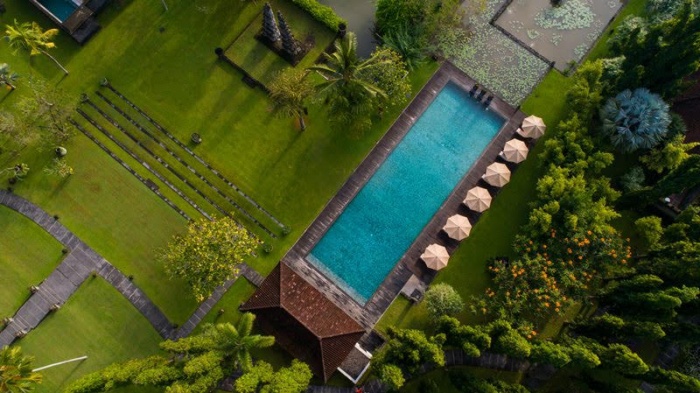
Chedi Club Tanah Gajah Ubud to change hands
The Chedi Club Tanah Gajah Ubud is set to change hands and become an anchor for the ambitions of a brand-new hotel management group, Hadiprana Hospitality.
The formal handover from the resort’s long-time operator, Singapore-based GHM, is set to take place on January 1st.
The rebranded property will be called Tanah Gajah, a resort by Hadiprana.
Both the group and the resort are named for the late Hendra Hadiprana, a legendary Indonesian architect and designer, whose hands have fashioned some of the country’s most acclaimed properties, including the InterContinental Bali Resort and the Legian Bali as well as the five hectare-property moored in the lush rice fields of Ubud.
Hadiprana designed the hotel as a family retreat in the 1980s, and named the estate for a nearby cave temple, Goa Gajah (Elephant Cave).
ADVERTISEMENT
He ceded management of the property to GHM in 2004 when his restless imagination conjured the development of yet another estate, named Bumi Duadari, as his private residence in a valley overlooking the Petanu River.
Hadiprana died in December at the age of 89.
His heirs are launching Tanah Gajah as a tribute to the patriarch’s abiding genius and, moreover, as the ways and means of furthering his legacy and his commitment to the art and culture of Indonesia while fostering sustainable relationships with nearby communities.
“We’ve had a terrific run with GHM,” said Sekaraya Hadiprana Surjaudaja, the architect’s granddaughter, and a principal in the new organisation.
“My grandfather and GHM founder Hans Jenni were collaborators, who became great friends, and who together ushered this property onto a global stage, to great acclaim.
“Now we embark on a new journey, to elevate our guest experiences to the next level.”
Since opening in July 2004, the Chedi Club has won renown as one of the most sublime resort experiences in south-east Asia, partly for its design appeal and setting in the rice fields of Ubud, partly for the spectacular kecak dance performed twice a week on property by a troupe from a neighbouring village and partly, too, for the estate’s expansive art collection.

